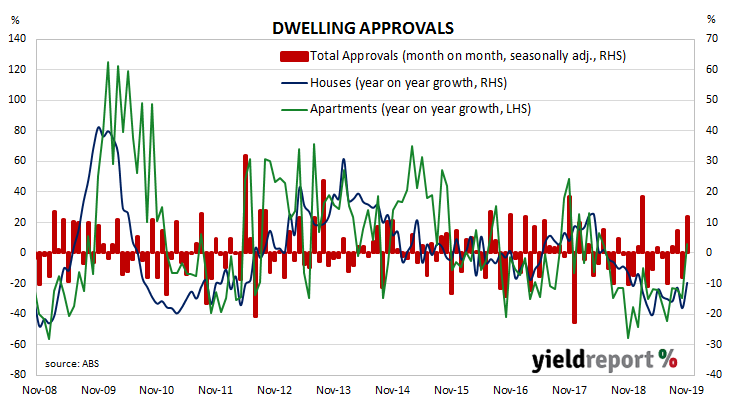Approvals for dwellings, that is apartments and houses, have been heading south since mid-2018. As an indicator of investor confidence, falling approvals represent a worrying signal, not just for the building sector but for the overall economy. A recovery in 2020 is expected by some economists, while others are unwilling to be quite as definitive just yet.
The Australian Bureau of Statistics has released the latest figures from November and total residential approvals increased by 11.8% on a seasonally-adjusted basis, a larger rise than the 2% increase which had been expected and a marked turnaround from October’s revised figure of -7.9%. However, on an annual basis, total approvals were still down by 3.8%, although this figure is a large improvement on October’s comparable figure of -22.9% after revisions.
Westpac senior economist Matthew Hassan said, “Overall, the November update pares back some of the downside risks that were emerging from weak reads in previous months, although monthly volatility is making it difficult to be confident about trends.”

Domestic bond yields finished the day moderately lower. By the end of the day, the 3-year ACGB yield had lost 2bps to 0.76%, the 10-year yield had fallen by 4bps to 1.20% while the 20-year yield finished 3bps lower at 1.63%.
Prices of cash futures contracts moved to reflect a hardening of expectations of another cut in the cash rate target, some time in the next few months. By the end of the day, February contracts implied a 60% chance of a 25bps rate cut, up from the previous day’s 56%. March contracts implied an 80% chance of a cut, up from 73% while April contracts continued to imply another rate reduction was fully priced in.

